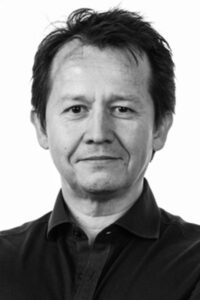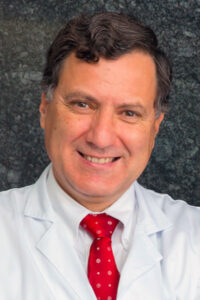New approaches to modulating T cells explored during plenary session
T cells have become a mainstay in cancer treatment, but T-cell therapy is not foolproof. Effector T-cell activity can lead to antigen clearance in some patients, but too many patients experience antigen persistence or poor co-stimulation that result in T-cell hypostimulation, or exhaustion.
The plenary session Leveraging the Immune System in the War on Cancer on Wednesday, April 14, explored novel approaches, including methods to boost antitumor T-cell function and eliminate immune suppressive factors and cells that act on the tumor microenvironment. Some of these approaches cold pave the way for a new round of successful cancer immunotherapies. Registrants can watch a replay of the session through June 21, 2021.
Transcriptional networks

Prolonged exposure to antigens can result in T-cell exhaustion. The transcription factor NFAT controls both positive and negative transcription programs that can lead to T-cell activation and antitumor activity or toward T-cell exhaustion. Increasing the positive effects of NFAT can increase tumor infiltrating lymphocyte (TIL) numbers in mouse models. One pathway to enhance NFAT and TILs is overexpression of another transcription factor, BATF.
“BATF is very strong at down-regulating tumor growth,” said Anjana Rao, PhD, La Jolla Institute for Immunology. “BATF overexpression promotes tumor clearance and anti-tumor memory. This suggests that targeting transcription programs can counter T-cell exhaustion and improve clinical outcomes.”
Targeting Treg cells
A high count of T-regulatory (Treg ) cells is associated with poor overall survival in cancer. CD25 is a potent target to selectively deplete Treg cells, but early mouse models have mostly failed.

The problem was the anti-CD25 antibody used, said Sergio A. Quezada, PhD, University College London Cancer Institute. In addition to depleting CD25, early anti-CD35 antibodies also blocked interaction between interleukin-2 (IL-2) and its receptor, blocking IL-2 signaling. A recent non-IL-2 blocking anti-CD25 antibody has significant anti-tumor activity as a single agent.
The non-IL-2 blocking anti-CD25 antibody relies on the ability of effector cells to sense and react to IL-2 and can act against poorly infiltrated, or cold, tumors. This new antibody modifies the tumor microenvironment to produce an inflamed cancer type. Changes include a strong increase in CD8 T cells and a modest increase of FOXP3 cells, relocation of CD8 and FOXP3 from the periphery to the interior of the tumor, and PD-L1 upregulation and relocation of expressing cells to the inner part of the tumor.
“We have an anti-human (h)CD25 that targets Tregs without interfering with IL-2 signaling,” Quezada said. “RG6292 preferentially depletes Tregs in PBMCs and in human tumor samples. It is slated to begin clinical trials as a single agent and in combination with atezolizumab.”
Novel CAR designs

CAR T therapy has the potential to cure cancer, but that potential depends in large part on sustained activity. But CAR-Ts are not universally successful. Functional persistence and antigen escape are familiar problems.
“The limitations provide a road map for where to focus our efforts to further improve this therapy,” said Michel Sadelain, MD, PhD, Center for Cell Engineering, Sloan Kettering Institute. “We are redesigning CARs to overcome some of those limitations.”
CRISPR/Cas9 techniques have helped design multiple variations on the prototypic CD19 CAR architectures that were approved by the FDA in 2017, Sadelain said. Calibrating immunoreceptor tyrosine based-activation motifs (ITAMs) can alter the activation strength in CD28/CD3z CARs. A novel version with increased proliferation and longevity will enter clinical trials later this year.
One approach to reducing antigen escape is take advantage of the HIT receptor, which is more sensitive to low level antigens than CARs. Combinational targeting is another approach. And Sadelain said that preparations are underway to take on solid tumors.
CD137 rises again

CD137 is a familiar member of the TNFγ family. It has been in, then out, of trials for more than a decade. Several novel CD137 agonists are back in trials, with others moving through preclinical stages.
In humans, CD137 deficiency is associated with uncontrolled viral infections, which makes upregulation a promising target, said Ignacio Melero, MD, PhD, Clinica Universidad de Navarra. But first-generation CD137 agonists showed unacceptable liver toxicity in clinical trials.
Melero is pursuing a novel approach, creating a tumor-infiltrating T lymphocyte expressing CD137 to improve antitumor activity without liver toxicity. At least 11 compounds are in trial or approved, Melero said.
“There is extensive ongoing evidence for at least partial response in previously refractory tumors,” Malero said. “We should be looking at targeting CD137 co-stimulation in tumors, adoptive T cell therapy, synergistic combinations with other immunostimulatory agents, and neoantigen vaccine combinations.”
